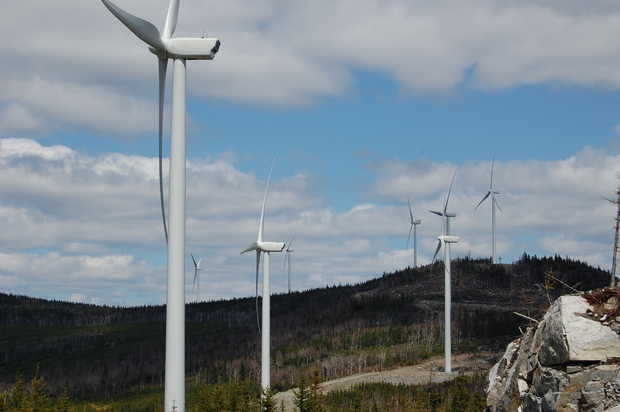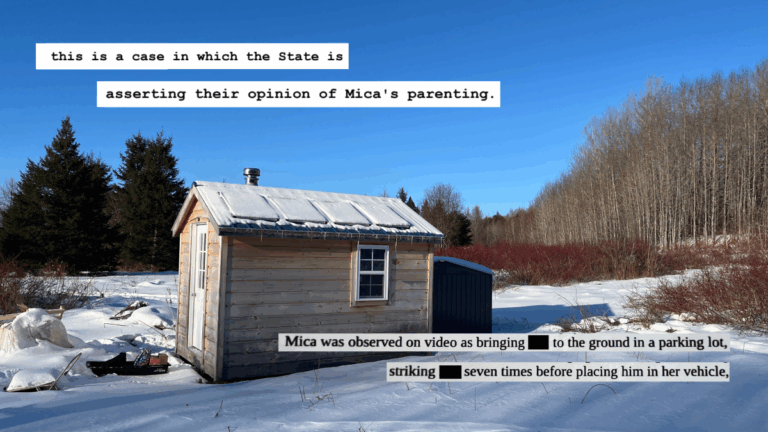A critical look at Maine wind act: Part 3
Editor’s note: This is part three of a three-part series on the 2008 law to fast-track wind turbine development.
After proposing major changes to state law that would speed up the review of wind power projects, Gov. John Baldacci’s wind power task force members went one step further: They made a map.
Without the map, the law would just be a set of rules. The map was essential because it showed where wind turbines could go to get fast-track consideration.
The map designated all the organized towns and about a third of the unorganized territory as the state’s “expedited wind zone” where that speedy consideration of projects would take place. The task force also proposed to allow the Land Use Regulation Commission (LURC) to expand the areas if applicants met certain standards.

How that map got drawn is not clear from the official record of the task force’s meetings. That’s because summaries for the last two meetings don’t exist, says task force chair Alec Giffen’s secretary, Rondi Doiron.
“Everyone was working straight out on getting the report done and no one had time to get the summaries done,” Doiron wrote in an email to the Maine Center for Public Interest Reporting.
But Giffen and others freely describe the map’s genesis: First, Giffen consulted with the developers’ representatives one-by-one, as they were loathe to share proprietary information with competitors.
Then he went to the environmental groups and asked what areas they wanted to protect. Then he came up with a proposed map designating expedited wind development areas.
“I integrated, based on what I knew about what areas were important for what kinds of uses,” said Giffen, “presented it to the task force and got concurrence that the way in which it was outlined made sense.”
Others describe the map-drawing process as a last-minute rush to get the task force’s report done in time for legislators to consider as they neared the end of a short session.
“There was a lot of ‘Here, here, here and here’ and ‘No, no, no and no,” during the map debate, said task force member Rep. Stacey Fitts, R-Pittsfield. “It changed several times.” Maine Audubon’s Jody Jones described the process as “I want this in, I want this out.” Whatever the process looked and sounded like is lost to the public record because no minutes were taken or recorded.
And that, says Sun Journal managing editor Judy Meyer, who’s also vice president of the Maine Freedom of Information Coalition, is “shocking.”
Maine law doesn’t require groups like the governor’s wind task force to memorialize deliberations, says Meyer.
“There’s no requirement that they record their meetings or produce minutes,” she says. “What smells particularly about this is that there are some summaries and not others. That’s a real eyebrow raiser. You’d think a governor’s task force would have the ability to keep minutes of its proceedings.”
Giffen says the map — which was approved by the full legislature — is only the first step in deciding whether a project should be built in a specific place.
“It’s a coarse filter to try to get wind power development guided to parts of the landscape where it’s already partially developed and you already have infrastructure,” he said. “Then you have the finer filters of the regulatory process.”
Task force member Pete Didisheim of the Natural Resources Council of Maine, who was one of the group’s strongest proponents of wind power development, says the map provided an essential tool by taking a lot of uncertainty out of the process of siting wind farms. That’s because he says that the designation of expedited zones announced, by implication, where developers shouldn’t go.
“I don’t think that any other state has drawn a map that says to developers, ‘Don’t go here,’” said Didisheim.
Attorney Chip Ahrens, who attended task force meetings on behalf of two clients, a large wind power developer and an installer of small wind turbines in commercial and residential sites, said that approach turned state regulation on its head – appropriately:
“There had always been on the table the state saying where wind power should go,” said Ahrens, who stressed he was not speaking on behalf of his clients. “I said, ‘let’s say where it should not go.’”
And just because a site is in the expedited permit zone doesn’t mean it’s an automatic approval once a wind power project applies for a permit to build.
“The law specifically says that the permitting agency shall not compromise its regulatory review criteria,” says LURC director Catherine Carroll. “It’s not a slam dunk.”
Law gets tested; Applicants get testy
That point was made acutely clear this year in one of the first tests of the new law, an application by TransCanada to build turbines in the expedited wind zone near its western Maine Kibby Mountain project.
At a meeting on July 7 in Bangor, LURC commissioners — all of whom were nominated or renominated by Baldacci — indicated by straw vote they’d deny TransCanada’s request to construct the turbines.
Several environmental organizations, including the three groups who were on the governor’s wind power task force, testified against portions of the project. Objections ranged from damage to wildlife to degradation of the scenically valuable high mountain site.
Many of the commissioners likewise expressed concerns about the potential harm the project would do to the site. Commissioners struggled to weigh the new law’s goals for wind power development against the environmental problems posed by the project.
“I’m terribly conflicted here,” said Commissioner Steve Schaefer.
He and other commissioners said they were unclear whether the law’s goals for wind power were binding on them and would force them to approve a project they didn’t feel protected the landscape they were legally obligated to protect.
“The Wind Power Act looms large here,” said Commissioner Ed Laverty. “We’re all going to reduce global warming and our carbon footprint,” continued Laverty, “but most of the immediate benefits of projects like these do not accrue to the people of Maine, they’re exported through the grid elsewhere.
“What stays with us in the state of Maine are the environmental impacts.”
A few days after the LURC meeting, TransCanada’s project manager Nick DiDomenico was outraged at the meeting’s outcome. The environmental groups (DiDomenico called them “NGOs”) that had participated in the task force and then opposed TransCanada’s proposal drew his special wrath: “The NGOs were at the table when the map was drawn up,” he said. “That to me means these areas are acceptable for visual impacts. Maybe we were a little naïve in drawing that conclusion.
“We thought the Wind Power Act meant something.”
Within eight days, construction company Cianbro’s chairman Peter Vigue had published a column in the Bangor Daily News excoriating LURC. Cianbro has done construction work on TransCanada’s wind power projects as well as others in the state.
“This unpredictable regulatory environment will discourage investment in Maine,” wrote Vigue.
On Aug. 1, retired law professor Orlando Delogu published a similarly sharp-toned column in the Sunday Telegram.
“Reading a transcript of the recent LURC hearing on TransCanada’s proposed Kibby No. 2 wind energy project, a 45-megawatt expansion of an existing facility in Chain of Ponds Township, makes you want to cry for Maine’s economy and energy future,” wrote Delogu.
“And then it makes you mad.”
But state Sen. Peter Mills isn’t mad at LURC. Instead, he calls the LURC commissioners “victims” of a new state policy that isn’t clear enough about if, and how, competing values can be resolved.
“No one wanted to be bothered with the details,” said Mills. “We’ll just leave it up to LURC to figure out what we mean. We passed this thing, but we never gave them the tools to deal with this.”
LURC Commissioner Sally Farrand mirrored Mills’ frustration, when she remarked during the July 7 hearing, “Boy, I sure hope we can tighten up some of this stuff because I see it as a skating rink with some very dull skates.”
Other problems
There are other problems created by the legislation. One unintended consequence is that Maine mountain ridgelines, once available at relatively cheap prices to those who wanted to preserve them, have become coveted — and expensive — pieces of land.
“Were it not for the wind-power market, alpine land has fairly limited value,” said Alan Stearns, deputy director of the Bureau of Parks and Lands. “Right now the mathematics is land with wind power potential is not for sale for conservation.
“As long as the market for wind power is dynamic,” said Stearns, “most landowners with wind-power potential are working with wind power developers, not conservation groups, for that land.”
And turbine noise that irritates neighbors has proven to be especially problematic, with residents who live near towers complaining of sleep disturbance and other health problems. But a comparison of the task force’s report with the governor’s legislation that became the Wind Power Act reveals a significant omission: The recommendation that the environmental protection commissioner be given the power to modify the noise aspects of a project’s permit never made it into the legislation.
Gov. Baldacci supplied the following answer in writing when asked why that provision had been left out of his wind power legislation: “I relied on the Task Force members’ review of the draft legislation as a complete and accurate reflection of all the recommendations in their Report. If one or more of their recommendations was not included, I was not aware of that nor was any omission or deletion done at my request or direction.”
Task Force Chairman Giffen likewise had no idea how the omission occurred, and told the Center he knew of no plans to correct it.
Finally, the building of enormous, high-voltage transmission lines that the regional electricity system operator says are required to move substantial amounts of wind power to markets south of Maine was never even discussed by the task force – an omission that Mills said will come to haunt the state.
“If you try to put 2,500 or 3,000 megawatts in northern or eastern Maine – oh, my god, try to build the transmission!” said Mills. “It’s not just the towers, it’s the lines – that’s when I begin to think that the goal is a little farfetched.”
Uncertain future
What’s significant for the state’s wind power policy is that Mills, who wasn’t on the task force, isn’t the only one who now doubts whether the state can — or should — meet the goals promoted by the governor and enshrined in his Wind Energy Act. Members of Baldacci’s hand-picked task force are dubious as well about whether there really are enough suitable — and politically acceptable — sites to build turbines to meet the goal of 2,000 megawatts by 2015 and 3,000 megawatts by 2020.
“We have to look at whether we have the land base to meet them,” says Jones.
Reaching 3,000 megawatts “is dependent on whether the political consensus holds up,” says task force member and DEP Commissioner David Littell.
“I think it’s a stretch to reach 2,000 by 2015,” says the NRCM’s Pete Didisheim.
But Giffen said he still believes that promoting wind power is an essential response to global warming.
“So big picture here, the way that I look at this, is to say, the idea that there’s not going to be any change in the state of Maine as regards our natural resources or how we generate energy, that’s not a possibility,” said Giffen.
”If we don’t do anyting, we’re going to see massive changes just in our natural resources. The changing climate conditions are going to mean that in 100 years the area around Portland is going to be suitable for loblolly pine (a southern tree species). What does that mean for our existing soils, our existing ecosystems?
“Is no change something that is even possible?” asks Giffen. “No, it’s not. Do we have significant problems with our energy supply and dependence on fossil fuels in terms of climate change? Yes.
“So is Maine well served by having looked at its regulatory system to see how it can deal in a rational way with this kind of development? Is it perfect? I doubt it. Will we learn as we go along?
“Yes.”
LURC Commissioner Laverty takes another perspective: “I think we need to take into consideration, there aren’t a lot of these 2,700 plus foot mountains in the state of Maine … I think that we have to pay special attention to the impact on significant resources in these areas, because,” he said, “once you invade these resources, the chances of re-establishing them over time, at least in our lifetimes, probably are fairly slim.”
In the end, the law that was supposed to put conflict to rest has not, and for a host of reasons, both procedural and substantive. Harvard University professor Henry Lee, who teaches energy and international development at the Kennedy School of Government, says the conflict in values that wasn’t resolved by Maine’s Wind Energy Act – where those who want to act against the threats of global warming fight land conservationists – is one that’s playing out across the nation and globe.
“I think that this pits to some extent environmental organizations against each other,” says Lee. “Some are focused on pollution issues and see wind and solar and other renewables as a significant improvement in terms of reduced pollution — and it is.
“On the other hand if you’re worried about land use, in a world where … you have a finite quantity of land, there will continue to be significant disputes,” says Lee. “Wind sites tend to be slightly better along the coast and at higher altitutes, exactly where you have significant conflicts with esthetics.
“These disputes are going to get more intense,” concludes Lee. “Not less.”
State wants $36,000 for public records
As part of its reporting on the Wind Energy Act of 2008, the Maine Center for Public Interest Reporting filed a state public records request, called a “FOAA request.”
However, The Center never received much of the material it requested from the state because the cost was prohibitive: $36,239.52.
That’s what the state Public Utilities Commission wanted from the Center to search for emails from 2005-2007 between then-PUC Chairman Kurt Adams and any representatives of wind company First Wind (where Adams took a job after leaving the PUC); between Adams and Gov. John Baldacci, for whom Adams had previously worked as legal counsel; and between Adams and several prominent wind power attorneys employed by the law firm of Verrill Dana.
The Center wanted those emails because Adams’ input had been crucial to the deliberations of the governor’s wind power task force.
Initially, PUC attorney Joanne Steneck told the Center that a search of backup discs containing email records for the period prior to January 2008 could be done for a cost of upwards of $10,000.
The Center then asked for a waiver of the $10,000 cost, under provisions in the state’s FOAA that allow waivers to be granted for noncommercial use of public information.
They refused to grant the waiver and revised their estimate of the cost for the Center to get the information to $36,239.52.
CORRECTION: The original version of this sidebar misspelled PUC attorney Joanne Steneck’s surname. This version has been revised to reflect the proper spelling.







